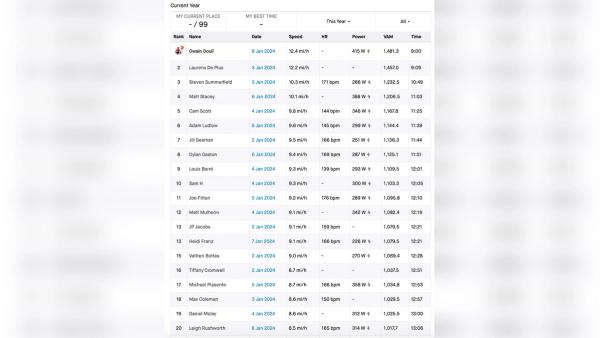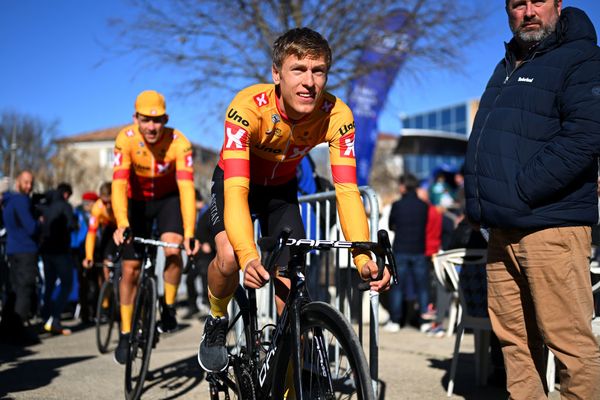Tour de France 2024 route revealed
The 2024 Tour de France will feature four summit finishes and two time trials, as well as a hilly start in Italy, gravel roads, and an unprecedented finale in Nice
Patrick Fletcher
Deputy Editor
© ASO
The 2024 Tour de France route map
The parcours for the 111th edition of Tour de France was officially unveiled in Paris’s Palais des Congrès on Wednesday, with race organisers ASO once again rolling out a route that suits the climbers over the rouleurs.
There’s enough on offer for the sprinters – six or seven solid opportunities – and terrain for puncheurs and baroudeurs, but the focus becomes increasingly mountainous as the race heads towards its final third.
The 2024 Tour de France will cover a total distance of 3,405.6km, with the focus on climbing underlined by the total of 52,000 metres of elevation gain. That's slightly down on the 2023 total but still over 10,000m more than the recently-revealed Giro d'Italia 2024 route.
The 2024 Tour starts with three stages in Italy and crosses into France via the Alps before venturing north for the first time trial and a heavy helping of gravel. The second week takes the race down towards the Pyrenees via the Massif Central, for a double-header of summit finishes before the final week unfolds in the Alps.
Read more: Tour de France Femmes avec Zwift 2024 route revealed
Four summit finishes is a heavy helping, with Pla d’Adet and Plateau de Beille coming back-to-back in the Pyrenees at the end of the second week, before Isola 2000 and La Colmiane feature in the Alps the final week. You could even make a case for it being five, with a finish at Superdévoluy also appearing in the Alps.
All that climbing is balanced out – although whether that is the case is a perennial debate – by two time trials, the first a 25km rolling effort near Dijon towards the end of the first week, the latter a hilly 35km affair to close the entire race.
Read more: Astana Qazaqstan's faith in Mark Cavendish will pay off at the Tour de France
It was already known, but that final day is the major novelty of the 2024 Tour de France, as the race concludes outside of Paris for the first time in its long history, due to the impending Olympic Games in the French capital. Not only does it swerve Paris, it also swerves the procession-and-sprint format that had become embedded on the Champs Elysées, with the first final day time trial since the iconic 1989 finale meaning the battle for the yellow jersey will come down to the very last day.
In lining up the most intense final day in modern history, the organisers have not made the rest of the final week any more gentle in compensation. In fact, this is arguably the toughest final week of the Tour de France in recent memory, too.
Four of the six stages are potentially pivotal days for the general classification. The climbs to Superdévoluy on stage 17 and the 4,500 metres of climbing en route to La Colmiane on stage 20 come either side of an explosive high-altitude affair that finishes at Isola 2000. Rivalling that for the honour of ‘Queen stage’ of the 2024 Tour is stage 15’s trip to Plateau de Beille, which is the sixth major mountain pass of the day. At over 200km and with more than 5000m of elevation gain, it’s a Bastille Day monster.
Read more: Carlos Rodríguez 'I want to improve on my fifth place at the Tour de France'
When you consider that the Plateau de Beille stage forms a Pyrenean double header right ahead of that final week, that makes five summit finishes and one hilly time trial in the space of the final eight stages. This is a well and truly backloaded Tour de France.
And yet, it’s also one of the toughest starts in the race’s history, too. The 3,600 metres of elevation gain on the road from Florence to Rimini are the most of an opening stage, and more than in the Basque Country last year. On top of that, stage 4 takes the race into France via the Alps, and there’s no light touch, with a long climb to Sestrière and then the mythical Col du Galibier (2,642m) before the finish in Valloire –" Never before has the Tour been so high, so soon," said race director Christian Prudhomme.
One of the standout features of the opening week, and of the whole route, is the gravel stage around the Côte des Bar areas of Champagne country, with no fewer than 14 sectors of dusty white gravel to be tackled on a stage that starts and finishes in Troyes.
In short, it's a route with an intense start, an even more intense final third, and plenty of thrills in between.
Tour de France week 1: Italy, time trial, and gravel
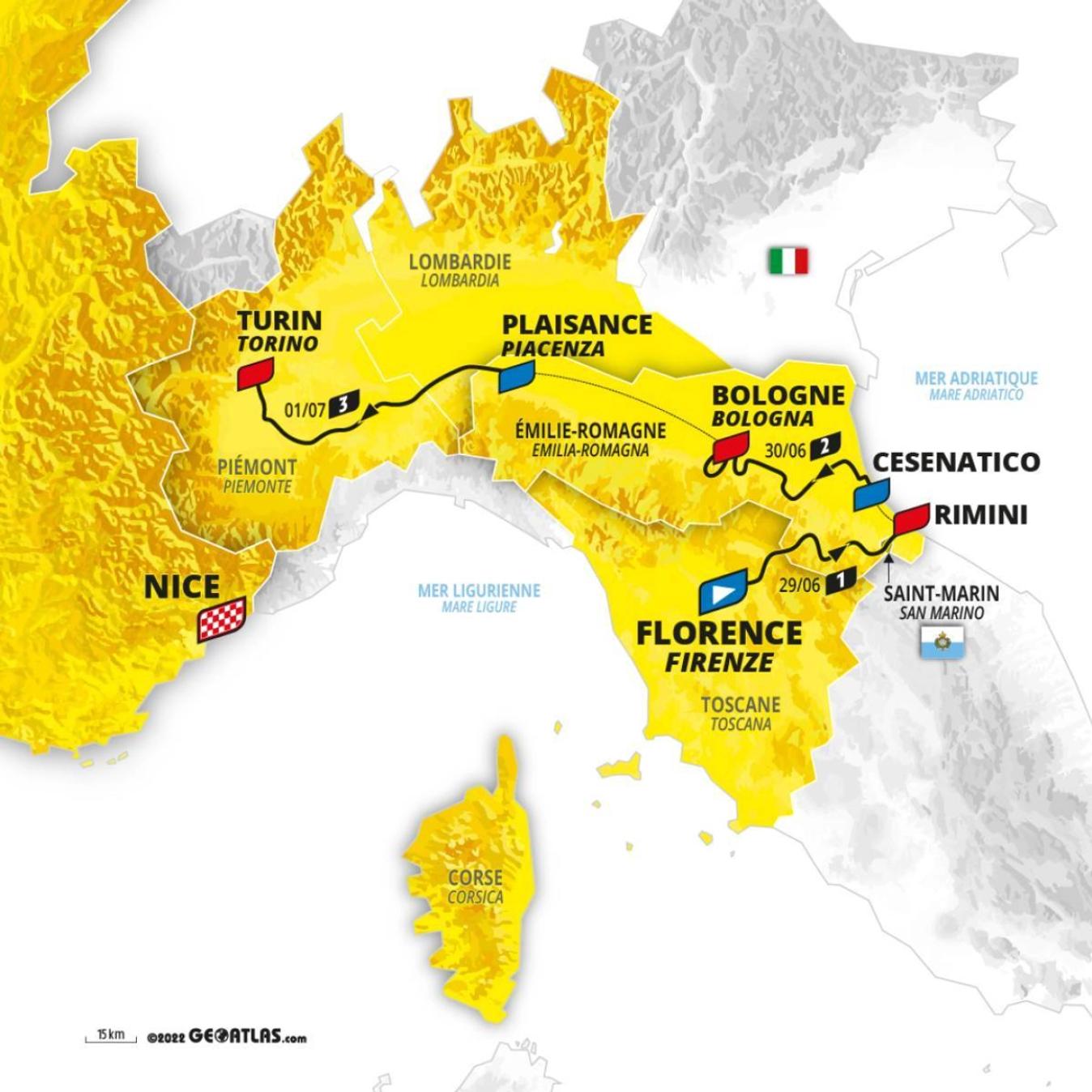
© ASO
The opening stages of the 2024 Tour de France
Despite the backloaded nature of the route, the 2024 Tour de France starts out in tough, hilly fashion.
For the third year in a row, we have a foreign Grand Départ, with Florence doing the honours and seeing the race off for a stage that finishes in Rimini, where 1998 Tour de France winner Marco Pantani died almost 20 years ago. It’s a hilly affair as the route crosses the Apennines, with over 3000 metres of elevation gain before the last of seven categorised climbs tops out in San Marino before the 25km run down to the Adriatic coast.
Stage 2 takes place in the Emilia-Romagna region and is a puncheur’s paradise. Starting in Pantani’s home town of Cesenatico, the route runs northwest to Bologna to borrow from the route of the Giro dell’Emilia, with a double ascent of the steep and striking San Luca climb (1.9km at 10.6%), followed by a fast and twisting 10km run to the line.
After another hilly start to the Tour – even if not on the same level as 2023’s visit to Bilbao – the sprinters will have their chance on stage 3, which contains three categorised climbs but none that are realistically going to prevent a bunch finish in Turin, which also plays a leading role in the start of the 2024 Giro d’Italia.
Stage 4 starts in Pinerolo and heads for France. The only way in is via the Alps, so we have an early visit to the mountains, and it doesn't shy away from the biggest mountains, despite coming so early. The stage starts with a long near-40km haul to Sestrières, before the shorter Col de Montgenèvre and then the mighty Galibier (23km at 5.1%), followed by a 19km descent to Valloire.
Stages 5 and 6 then start to take the race northbound up France’s eastern flank, with finishes in Saint-Vulbas and Dijon looking like sprint opportunities.
Stage 7 is the first individual time trial. Starting in Suits-Saint-Georges, it heads in a roundabout way up to Gevrey-Chambtertin, on rolling roads that cut alongside the vineyards of one of the many French areas famed for its winemaking. At 25km long, it's a medium-length test that will truly shape the general classification for the first time.
Stage 8 takes the race from Semur-en-Auxois to Colombey-Les-Deux-Eglises for what could be another sprint finish, but it’s stage 9 – the last of the opening week – that catches the eye with its gravel roads. Troyes hosts not only the start but also the finish of this stage, which heads into the Côte des Bars area of Champagne country and its dusty white vineyard tracks.
This stage was inspired by the Tour de France Femmes, which used the same tracks on a dramatic stage of its inaugural edition two years ago. But whereas the women covered four sectors that day, here we have 14 sectors, the first coming after 40km and the last 10km from the line.
With the risk of punctures and mechanicals high, not to mention the stress and stretched nature of the bunch on those tracks, it'll be one of the most intense and highly-anticipated days of the entire race.
While we’ve had plenty of cobblestones, this will be the largest helping of gravel in the race’s modern history. The last bit of rough stuff – beyond the short stretch atop the Super Planche des Belles Filles – was the stoney off-road section beyond the Plateau des Glières used on stage 18 in 2020.
Read more: Remco Evenepoel 'We've learned a lot ahead of next year's Tour de France'
Tour de France week 2: Journeying south to the Pyrenees
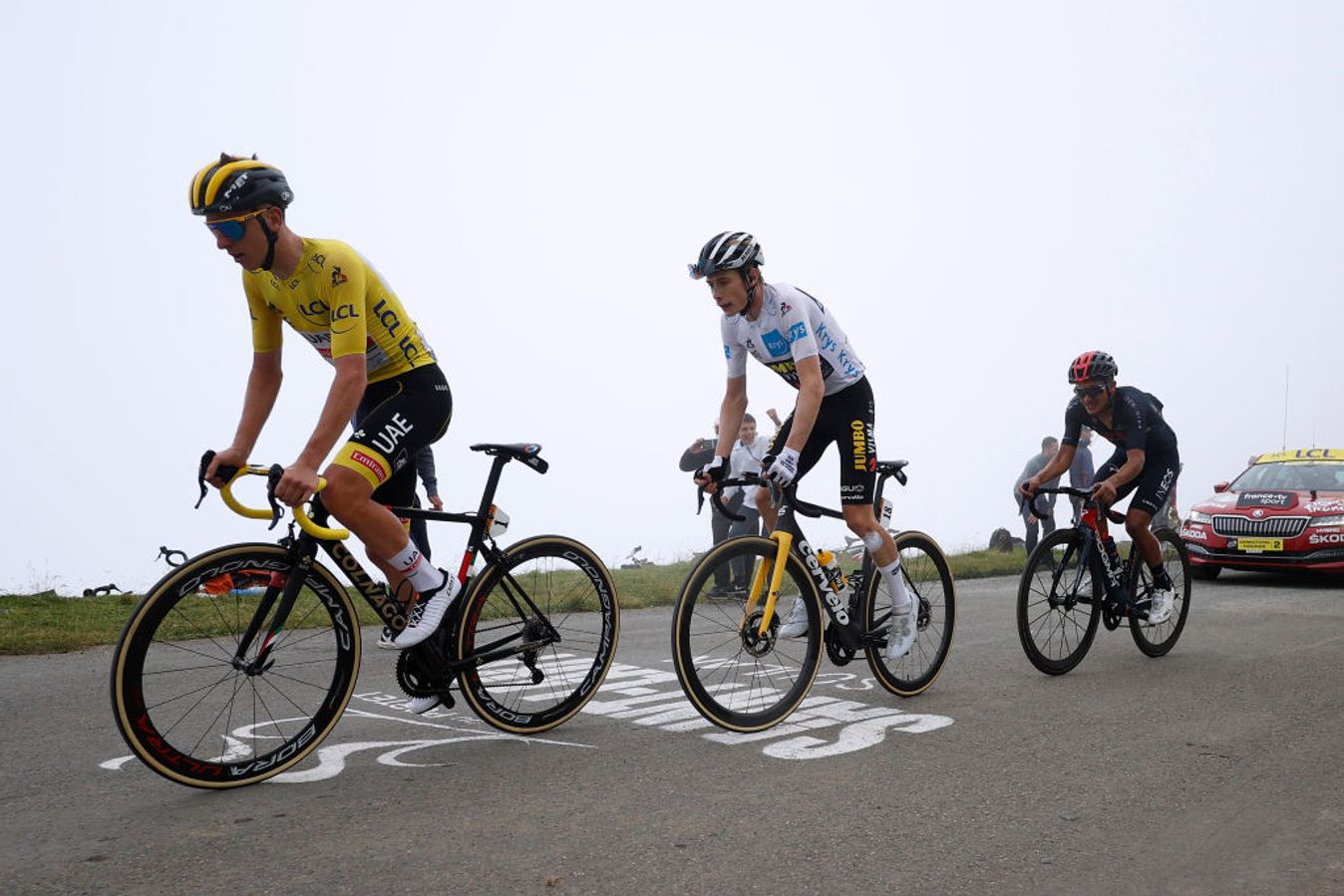
© Velo Collection (TDW) / Getty Images
Tadej Pogačar leads Jonas Vingegaard through the Pyrenees at the 2021 Tour de France
The second week is largely a transition to take us down to the Pyrenees for the high-mountain weekend doubleheader. Troyes – 100km south of Paris – is the most northerly point of the 2024 Tour and, after a rest day in Orléans, the race will head south for four days.
The first of these, stage 10, looks like a sprint opportunity in Julian Alaphilippe’s hometown of Saint Amand Montrond, but crosswinds are well known in this area and the Tour was memorably ripped to shreds there in 2013, with Mark Cavendish beating Peter Sagan from a front echelon of a dozen riders.
Stage 11 takes us into the Massif Central, a medium mountain range in the middle of France, where we’ll have a repeat of the 2016 stage to Le Lioran, via the Puy Mary and Col du Perthus and Col de Font de Cère. Greg Van Avermaet won from the breakaway that day and while this is not one of the more obvious GC flashpoints, the scale of climbing (4,500m) and distance (just shy of 200km) make this a very real pitfall for anyone even slightly below their best.
Stage 12 takes the race out of the Massif Central and southwest for a breakaway winner or a sprint in Villeneuve-sur-Lot, while stage 13 completes the southerly haul with another flat stage from Agen to Pau. This will likely be another day for the sprinters when the peloton arrives in Pau, an oft-visited staging post of the Tour, known as the gateway to the Pyrenees.
Starting from Pau the next day, stage 14, the first Pyrenean stage of the race, finishes on Pla d’Adet, marking the 50th anniversary of the first visit and Raymond Poulidor’s victory there in 1974. The climb was last used in 2014, with Rafal Majka winning the stage and Vincenzo Nibali strengthening his grip on the yellow jersey. Measuring more than 10k.6m at an average gradient of 7.9%, it’s a tough hors-catégorie-rated ascent, and it's not on its own, with the iconic Col du Tourmalet (19km at 7.4%) – the Tour's most-used climb – and the Hourquette d'Aancizan (8.2km at 5.1%) coming ahead of the final climb.
That, however, pales in comparison to what’s to come on stage 15, a 198km mountain epic. The sheer difficulty of this stage may discourage riders from taking too many risks in the days prior. The astonishing route scales the Peyresourde (6.9km at 7.8%), from the gun, followed by the vicious Col de Menté (9.3km at 9.1%), the shorter Col de Portet d’Aspet (4.3km at 9.7%), and Col d’Agnès (10km at 8.2%), all before the final haul to Plateau de Beille – 15.8km at 7.9%. The climb was last used in 2015 in the Tour won by Chris Froome and although there weren’t too many GC fireworks that day, the level of climbing beforehand makes this a different beast entirely.
Tour de France week 3: All-action finale in the Alps
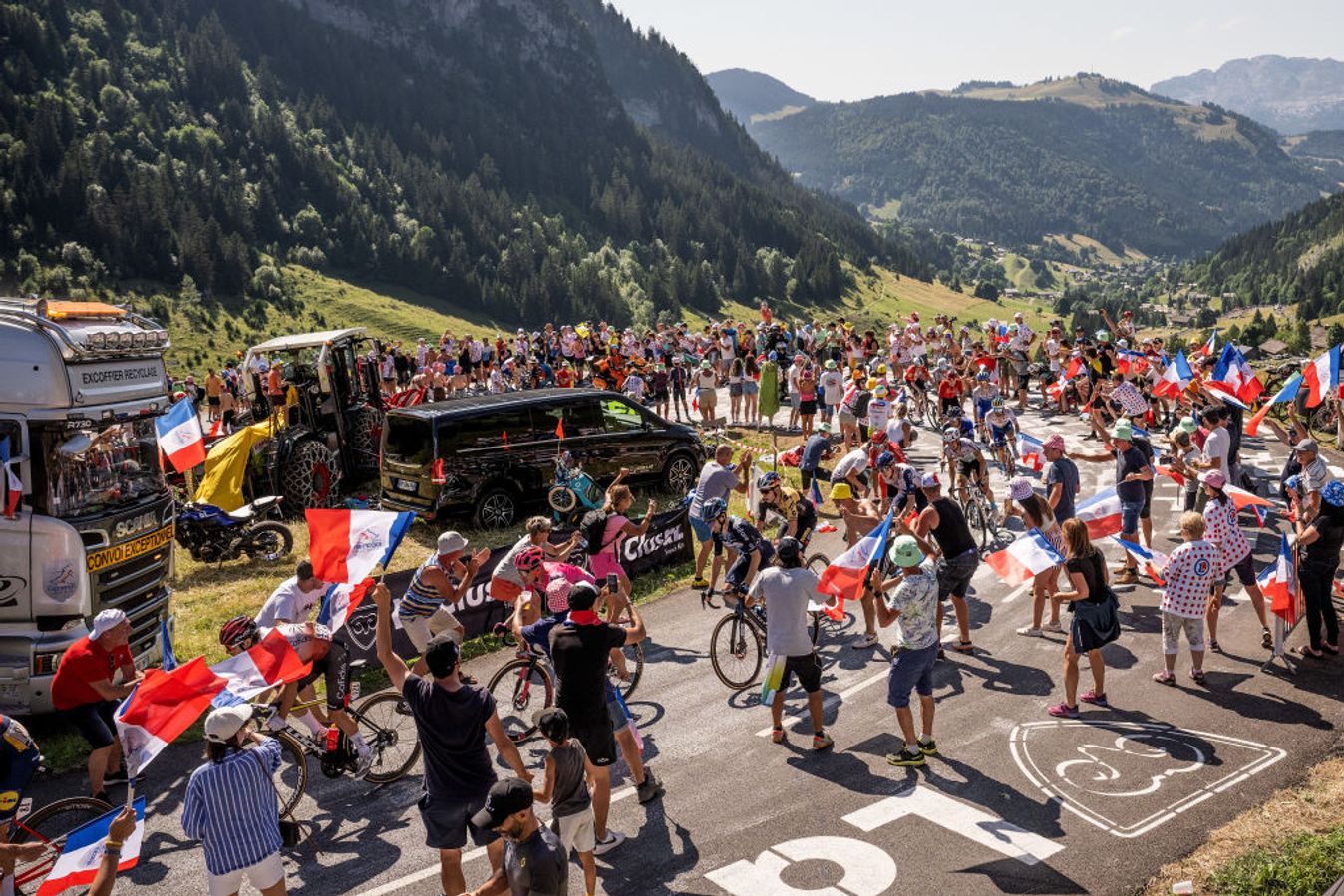
© Velo Collection (TDW) / Getty Images
The Alps take centre stage during the final week of the 2024 Tour de France
After the second rest day, the final week starts out with a well-worn ‘transition’ from the Pyrenees towards the Alps, with the peloton heading east along the southern border. In the Alps, three further summit finishes lie in wait, along with that all-important final-day time trial.
Having already been driven east to Gruissan for the rest day, the riders will continue to Nîmes on stage 16 likely for a sprint finish in sweltering heat. From there, it’s straight into the climbing, with stage 17 finishing in the ski resort of Superdévoluy on the western fringes of the High Alps. The resort has never featured in the Tour, and it’s arguably the tamest of the final-week mountain stages, coming down late to the Col du Bayard (6.8km at 7.3%), the Col du Noyer (7.5km at 8.4%) and then a short hop up to the finish at Superdévoluy (3.8km at 5.9%).
Stage 18 is something of a parenthesis, avoiding any big mountains on the road from Gap to Barcelonette. It's a hilly stage in which a breakaway looks destined to contest the stage honours.
It’s back towards the Italian border on stage 19 as things really intensify on the road to Isola 2000. The stage starts in Embrun and quickly heads for the Col de Vars (18.8km at 5.7%, 2,120m), before the Cime de la Bonnette (22.9km at 6.9%, 2,802m) marks the lung-busting high point of the 2024 Tour. The stage concludes with a final ascent to Isola 2000 (16.1km at 7.1%). The heady altitude of this stage will put this comparatively short 145km ride on a par with the stage 15 epic in the Pyrenees.
Stage 20 begins on the south coast for the double-headed finale in Nice, but the mountains are not in the rearview mirror yet, as the route sends the riders straight back inland to the Alpes-Maritimes in the hinterland of Nice. The Col de Braus, Col de Turini, and Col de la Colmiane all feature ahead of a summit finish on the Col de la Couillole (15.7km at 7.1%), which was the final climb of this year’s Paris-Nice. With 4,500m of elevation crammed into 132km, it promises thrills.
For the first time since 1989, the yellow jersey will not be decided on that penultimate day. Instead, the Tour will be raced until the very last metre. Much will depend on the race situation, but the concluding time trial in Nice offers a huge chance for the tables to turn, with a demanding all-round test on the Côte d’Azur. Instead of hugging the coast road between Monaco and Nice, the 35km course quickly nips inland to head up the La Turbie (8.1km at 5.6%) and Col d’Eze (1.6km at 8.1%) before a long descent back to the coast and a short run up and down the Promenade des Anglais to finish the Tour.
The Champs Elysées are hallowed ground for the Tour de France, but the Olympics have offered a convenient excuse for potentially one of the most thrilling finales we’ve seen in years.
Tour de France 2024 Stages
Stage 1: Firenze - Rimini | 206km
Stage 2: Cesenatico - Bologna | 200km
Stage 3: Piacenza - Torino | 229km
Stage 4: Pinerolo - Valloire | 138km
Stage 5: Saint-Jean-de-Maurienne - Saint-Vulbas | 177km
Stage 6: Macon - Dijon | 163km
Stage 7: Nuits-Saint-Georges - Gevrey-Chambertin | 25km (ITT)
Stage 8: Semur-en-Auxois - Colombey-Les-Deux-Eglises | 176km
Stage 9: Troyes - Troyes | 199km
REST DAY 1 - Monday 8 July
Stage 10: Orléans - Saint-Amand-Montrond | 187km
Stage 11: Evaux-Les-Bains - Le Lioran | 211km
Stage 12: Aurillac - Villeneuve-sur-Lot | 204km
Stage 13: Agen - Pau | 171km
Stage 14: Pau - Saint-Lary-Soulan (Pla d’Adet) | 152km
Stage 15: Loudenvielle - Plateau de Beille | 198km
REST DAY 2 - Monday 15 July
Stage 16: Gruissan - Nîmes | 187km
Stage 17: Saint-Paul-Trois-Châteaux - Superdévoluy | 178km
Stage 18: Gap - Barcelonnette | 179km
Stage 19: Embrun - Isola 2000 | 145km
Stage 20: Nice - Col de la Couillole | 133km
Stage 21: Monaco - Nice | 35,2km (ITT)
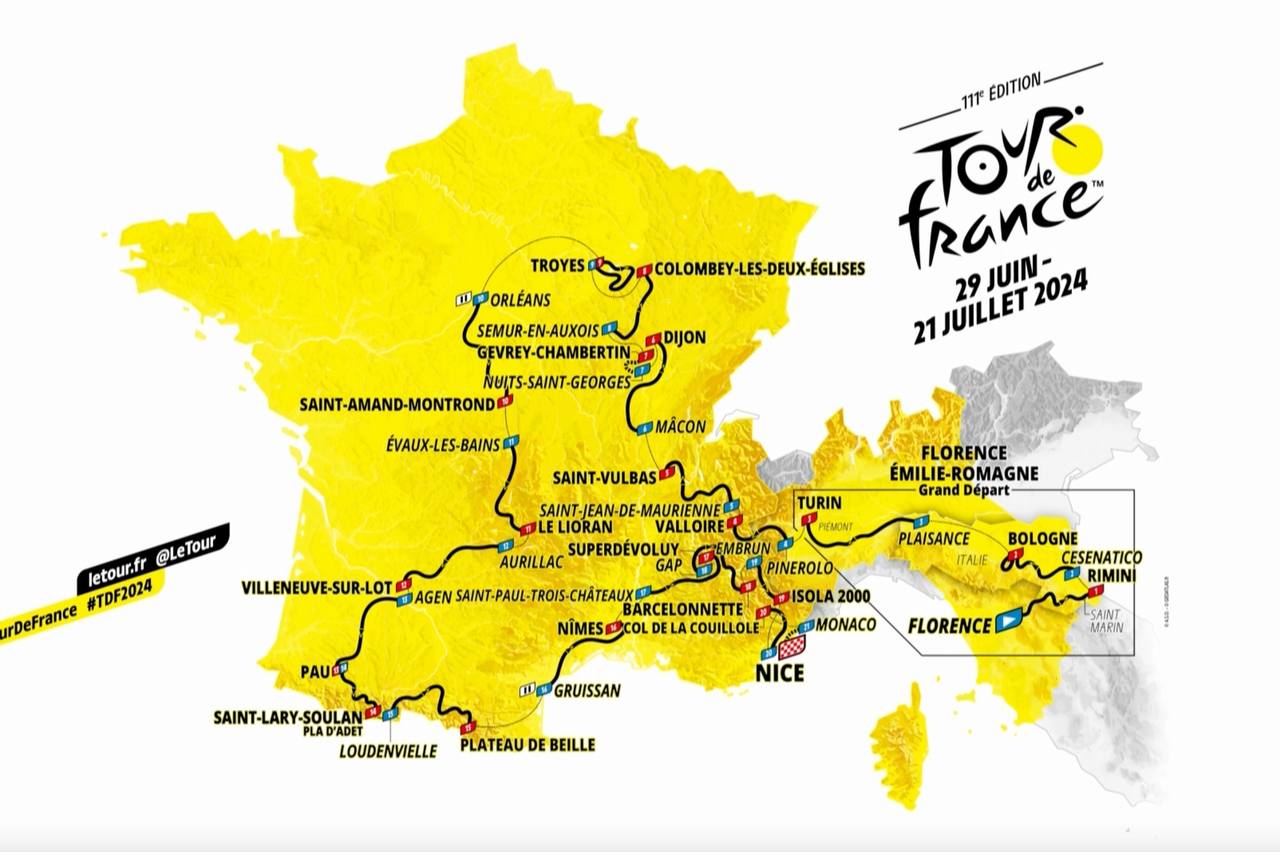








.jpg?w=600&auto=format)






.webp?w=600&auto=format)

